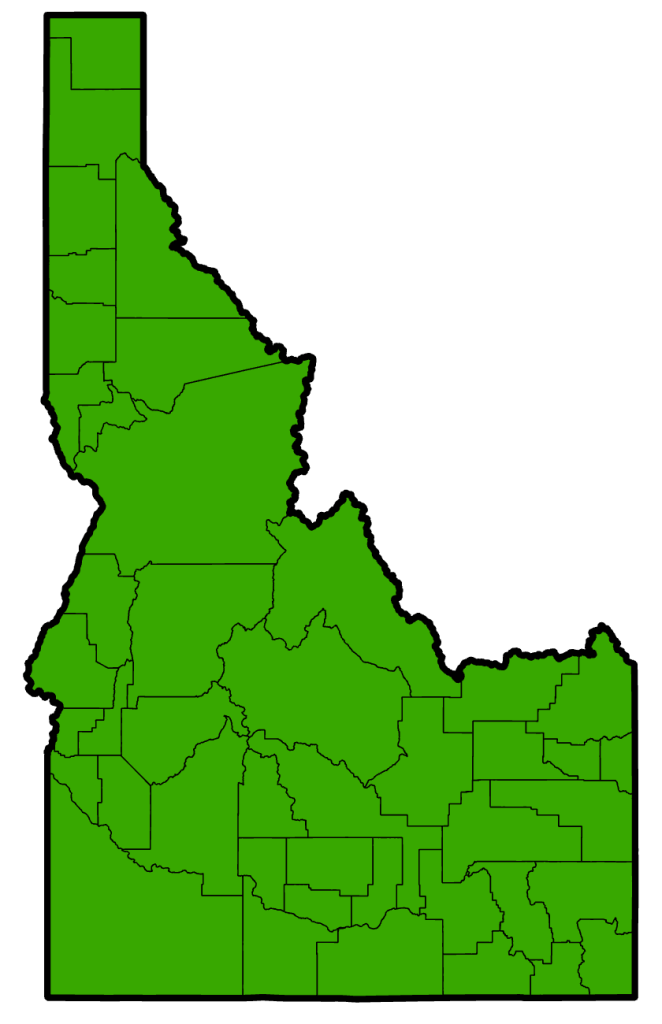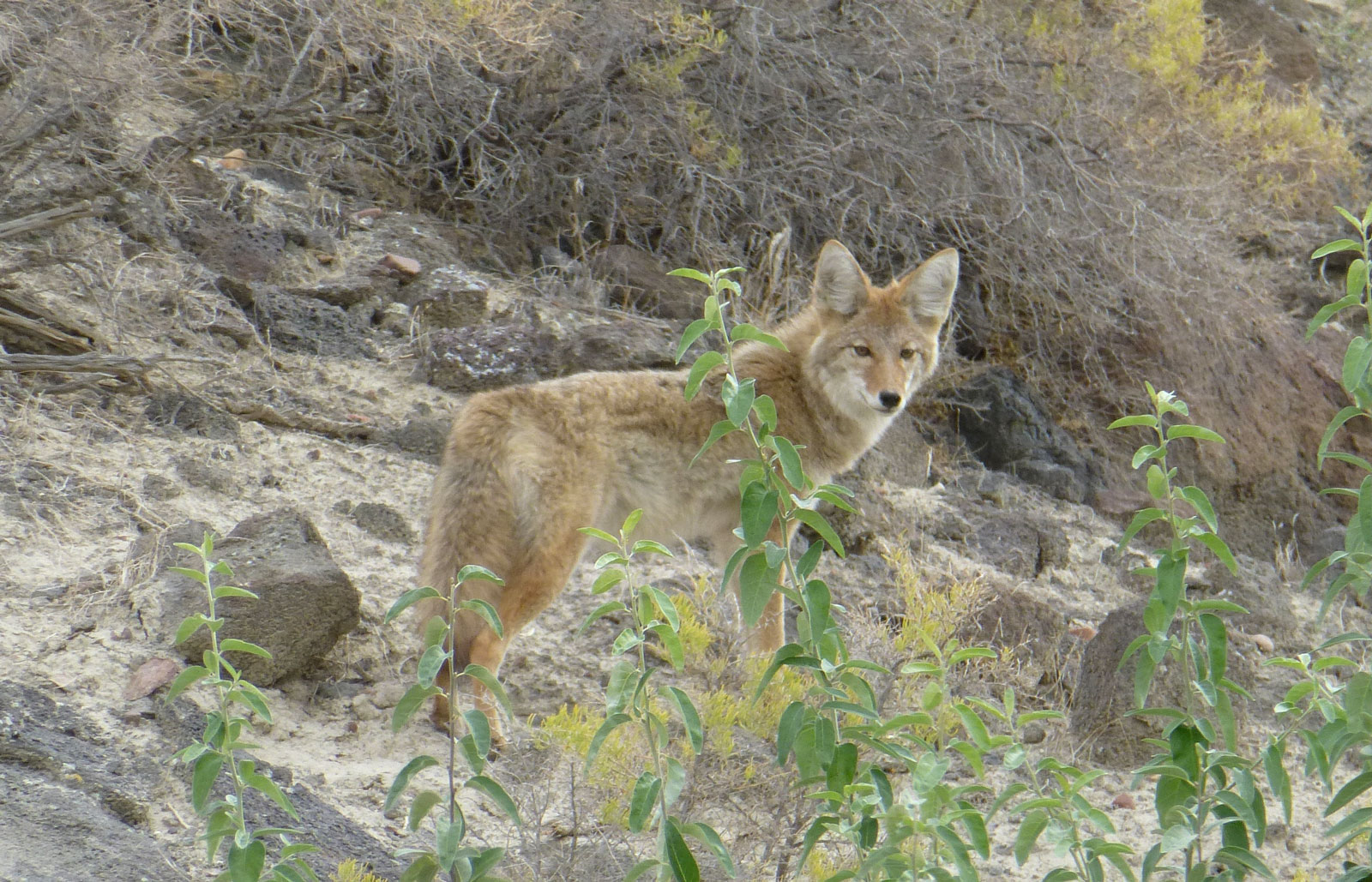No matter where you live in Idaho chances are that a coyote is not far away. Coyotes are found all across Idaho. One reason they are found across the state is that they are extremely adaptable to many different habitats, including urban habitats. One thing that makes coyotes so adaptable is that they will eat just about anything. They mainly eat small mammals, like mice, ground squirrels and rabbits, but they will also eat dead animals, birds, snakes, lizards, fruits and berries.
Coyotes are the second largest wild dog in Idaho. On average, coyotes weigh between 20 to 45 pounds and measure 30 to 40 inches long. They have a bushy tail and large ears shaped like triangles. Coyotes can run up to 40 miles-per-hour and can leap over an eight foot fence.
Coyotes communicate using a yippy kind of howl. Coyotes bark to tell others, like people and pets to stay away from their den or food. A low huff is used to call pups. Coyotes also mark their territory by urinating on bushes or rocks or by rubbing a scent gland on located at the base of their tails on things like rocks, logs or bushes. While coyotes have and mark their territories, they usually only defend them when they have pups.
Coyote pups are born in dens. Coyotes may dig their own den, or they may use an old badger or fox home. A typical litter is usually six to seven pups. At birth, pups weigh only one-half of a pound. They are helpless, blind and have limp ears and pug noses. When they are about 10 days old, their eyes open, and their ears start to straighten and stand up. They stay in the den and drink milk from the female until they are about three weeks old, then they begin to wander out of the den and eat meat regurgitated by the adults. By the time the pups are five to seven weeks old they no longer drink the females’ milk and start to learn to hunt. They are the size of an adult when they are nine to 12 months old. The first year of life is the riskiest for a coyote. Only 10 – 20 % of the young-of-the-year live to be one year-old. If a coyote does survive its first year, it could live up to 10 years of age.
If You Encounter a Coyote
Coyotes generally fear people and keep their distance. However if you encounter a coyote that does not move away from you:
- stand your ground and retain eye contact
- wave your arms, jump up and down, yell, or throw objects in the direction of the coyote, though not directly at it, to get it to move away from you
- if the individual appears injured or sick do not try to scare it away, leave it alone and move on
Avoiding Conflicts
Most coyotes fear people, however in rare cases some individuals may associate people with food and become habituated to people. In towns coyotes may find unsecured garbage and unattended domestic animals. To help avoid habituation keep garbage in doors at night, keep compost in secure containers, keep fruit off the ground, feed pets inside, keep pets indoors at night, don’t let your pet interact with a coyote.

